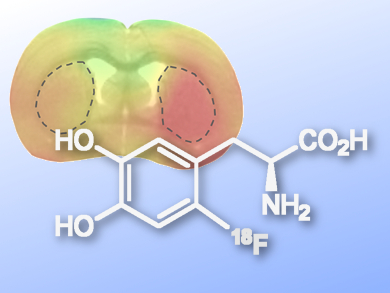Positron emission tomography (PET) imaging is an important diagnostic tool that can visualize functional processes in the body. The image is generated by radioactive tracers – typically radiofluorinated aromatic compounds and amino acids – whose synthesis tends to be tedious and time-consuming.
Bernd Neumaier and colleagues, University Clinic of Cologne, Germany, developed a one-pot, two-step, 50-minute procedure to prepare clinical quantities of two widely-used PET tracers: 6-[18F]fluorodopamine (6-[18F]FDA) and 6-[ 18F]fluoro-l-DOPA (6-[18F]FDOPA). The synthesis used nickel-mediated radiofluorination in low-base conditions and led to high radiochemical yields for both tracers.
The simplicity and speed of this new radiosynthetic method should make the routine production of PET tracers for clinical applications easier.
- A Practical One-Pot Synthesis of Positron Emission Tomography (PET) Tracers via Nickel-Mediated Radiofluorination,
Boris D. Zlatopolskiy, Johannes Zischler, Elizaveta A. Urusova, Heike Endepols, Elena Kordys, Holm Frauendorf, Felix M. Mottaghy, Bernd Neumaier,
ChemistryOpen 2015.
DOI: 10.1002/open.201500056




